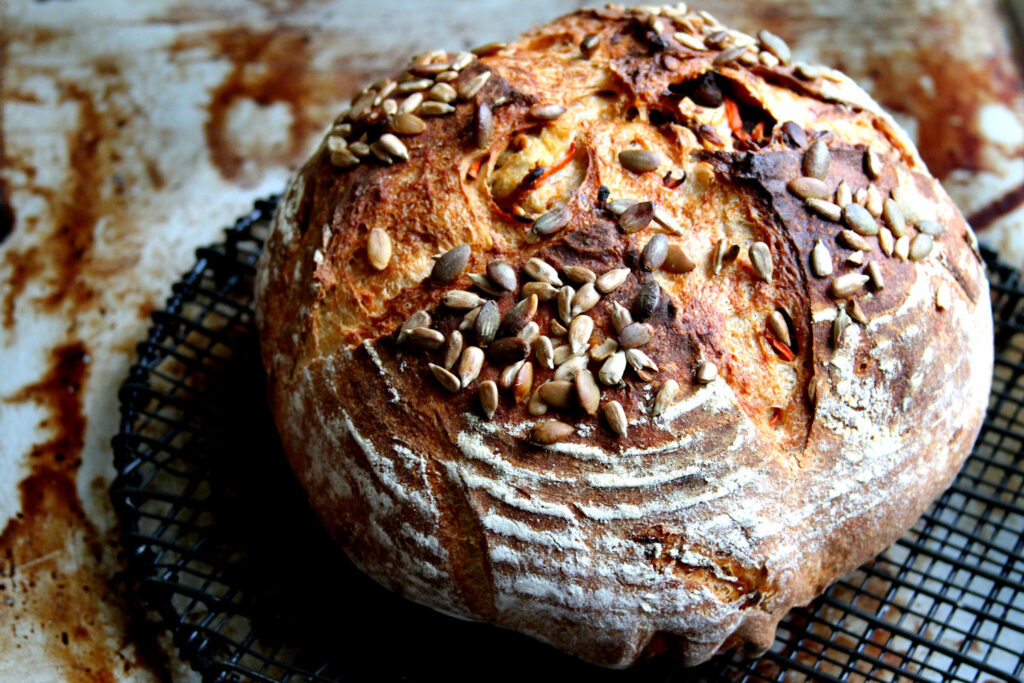Have you ever wondered why it’s called Marathon Bread? This delicious and nutritious bread has been a popular food staple in many cultures for centuries. But, where did the name come from, and what is the story behind it? Let’s dive into the fascinating history of this bread and discover the answer to this age-old question.
Table of Contents
Running Through History

The Marathon Legend
The term “marathon” dates back to ancient Greece and is rooted in the legend of Pheidippides, a messenger who ran from the town of Marathon to Athens to deliver the news of a Greek victory over the Persians. His journey, spanning approximately 26 miles, laid the foundation for the modern marathon race.
Pheidippides and the Battle of Marathon
In 490 BCE, Pheidippides was tasked with delivering the news of victory in the Battle of Marathon to the people of Athens. After running the entire distance without stopping, he collapsed and died from exhaustion. His heroic feat has been immortalized in the annals of history, forever linking the term “marathon” with endurance and perseverance.
The Modern Marathon
The first modern marathon race took place in 1896 during the inaugural Olympic Games in Athens, Greece. The event was designed to honor the legendary run of Pheidippides and has since become a staple of the international athletics scene. Today, marathons are held all over the world, drawing countless participants and spectators alike.
The Bread Connection
Ancient Greek Cuisine
Bread as a Staple
In ancient Greece, bread was a dietary staple, enjoyed by people of all social classes. Made from grains like barley and wheat, bread was a versatile and nutritious food source, providing essential energy for daily activities, including athletic events.
Nutritional Importance
Athletes in ancient Greece relied on bread to fuel their performance. It was not only a source of sustenance but also an important part of their training regimen. Marathon bread was specifically designed to provide athletes with the energy and nutrients needed to endure long-distance races.
The Evolution of Marathon Bread
The Athenian Marathon
As the marathon race gained popularity in ancient Athens, so too did the need for a specialized bread that could sustain athletes during the grueling event. Bakers began crafting a unique bread that was dense, hearty, and packed with nutrients. This new creation became known as “marathon bread,” a nod to the legendary race from which it drew inspiration.
Feeding the Athletes
Marathon bread quickly became a staple for athletes participating in long-distance races. The bread was made from a blend of whole grains, nuts, seeds, and dried fruits, providing a sustained source of energy for runners. The bread’s nutrient-dense composition made it ideal for fueling athletes throughout their arduous journey.
Ingredients and Benefits of Marathon Bread
The Power of Whole Grains
Whole grains, such as barley and wheat, are the foundation of marathon bread. These grains are rich in complex carbohydrates, fiber, and essential nutrients, offering an array of health benefits, including improved digestion and reduced risk of heart disease.

Fueling the Body
Complex Carbohydrates
Marathon bread is loaded with complex carbohydrates, providing a steady release of energy for athletes and fitness enthusiasts alike. Unlike simple sugars, which cause blood sugar spikes and crashes, complex carbs offer sustained energy to help individuals power through rigorous activities.
Protein and Essential Nutrients
In addition to carbohydrates, marathon bread is packed with protein, vitamins, and minerals. These nutrients support muscle recovery, boost the immune system, and contribute to overall health and well-being.
Sustainability and Environmental Impact
The use of locally sourced whole grains and natural ingredients in marathon bread not only supports local economies but also reduces the environmental impact associated with the production and transportation of highly processed and refined foods.
Marathon Bread Recipes and Variations
Traditional Greek Marathon Bread
The original Greek marathon bread recipe typically includes whole wheat flour, barley flour, dried fruits, nuts, seeds, and honey. The bread is often seasoned with traditional Mediterranean herbs and spices for added flavor and aroma.
Modern Adaptations
Gluten-Free and Vegan Options
Today, marathon bread recipes have evolved to cater to different dietary preferences and restrictions. Gluten-free variations often use alternative flours like almond or rice flour, while vegan versions may replace honey with agave nectar or maple syrup.
Flavored Marathon Bread
Modern marathon bread recipes also incorporate various flavors and ingredients, such as chocolate chips, nuts, seeds, and spices, to create unique and delicious variations of this energy-packed bread.
FAQs
A. Why is it called marathon bread?
Marathon bread is named after the legendary race from which it draws inspiration. The bread was specifically crafted to provide athletes with the energy and nutrients needed to endure long-distance races, such as the marathon.
B. What are the main ingredients in marathon bread?
The primary ingredients in marathon bread include whole grains, such as barley and wheat, as well as nuts, seeds, and dried fruits. These nutrient-dense ingredients provide sustained energy for athletes and fitness enthusiasts.
How is marathon bread different from regular bread?
Marathon bread is distinguished by its dense, hearty texture and nutrient-rich composition. It is specifically designed to provide a sustained source of energy, making it ideal for athletes and individuals engaged in rigorous physical activities.
Can I make marathon bread at home?

Yes, making marathon bread at home is simple and straightforward. Numerous recipes are available online, offering both traditional and modern adaptations to suit various tastes and dietary preferences.
If you’re interested in making your own Marathon Bread at home, here is a simple recipe to get you started:
- In a large bowl, mix together cups of whole wheat flour, 1 cup of rye flour, 1 cup of barley flour, 1/2 cup of mixed nuts and seeds (such as pumpkin seeds, sunflower seeds, and almonds), 1/2 cup of dried fruit (such as raisins or cranberries), 1 tablespoon of salt, and 1 tablespoon of active dry yeast.
- Add 2 cups of warm water to the bowl and stir until a thick dough forms. Knead the dough on a floured surface for 10-15 minutes, until it becomes smooth and elastic.
- Place the dough in a greased loaf pan and let it rise in a warm place for 1-2 hours, until it doubles in size.
- Bake the bread in a preheated oven at 375 degrees Fahrenheit for 45-50 minutes, until the crust is golden brown and the bread sounds hollow when tapped on the bottom.
- Let the bread cool for at least 30 minutes before slicing and serving.
Conclusion
From its legendary origins in ancient Greece to its modern adaptations, marathon bread has stood the test of time as a nutritious and energizing staple. Its enduring appeal is a testament to the power of whole grains, natural ingredients, and human ingenuity. Whether you’re training for a marathon or simply seeking a delicious and hearty snack, marathon bread is a tasty and versatile option that’s sure to satisfy your cravings and fuel your body for the long run.


